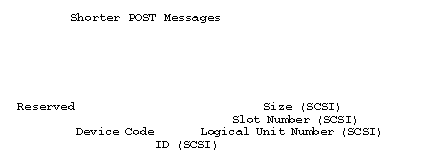

|
9.801 bytes |
Service Hints & Tips |
Document ID: GSMH-3C4KNV |
TP General - Introductory Service Information
Applicable to: World-Wide
Service Information:
FRU Replacement Strategy:
Before Replacing Parts
Ensure that all diskette fixes are installed prior to replacing any FRUs listed in this manual.
Use the following strategy to prevent unnecessary FRU replacement and service expense:
If you are instructed to replace a FRU and that does not correct the problem, reinstall the original FRU before you continue. Some computers have both a processor board and a system board. If you are instructed to replace either the processor board or the system board, and the first board that you replaced does not correct the problem, reinstall the original board, then replace the other (processor or system) board. If an adapter or device consists of more than one FRU, an error code might be caused by any of the FRUs. Before replacing the adapter or device, remove the FRUs, one by one, to see if the symptoms change. Replace only the FRU that changed the symptoms.
Warning:
A customized setup configuration (other than default settings) might exist on the computer you are servicing. Running Automatic Configuration might alter those settings. Note the current configuration settings (using the View Configuration option) and verify that the settings are in place when service is complete. The advanced diagnostic tests are intended to test only IBM products. Non-IBM products or modified options can give false errors and invalid responses.
Hard Disk Drive Replacement Strategy:
Always try to run a low-level format before replacing a hard disk drive.
Warning:
The drive startup sequence in the computer you are servicing might have been changed. Be extremely careful during write operations such as copying, saving, or formatting. Data or programs can be overwritten if you select an incorrect drive.
How to Use Error Messages:
Use the error codes displayed on the screen to diagnose failures. If more than one error code is displayed, begin the diagnosis with the first error code. The cause of the first error code can result in false error codes being displayed. If no error code is displayed, see if the error symptom is listed in the Symptom-to-FRU Index for the computer you are servicing.
How to Read POST Error Messages:
POST error messages are displayed on the screen as three, four, five, or eight digits. The error messages that can be displayed as shorter POST messages are highlighted in this index. Some digits will represent different information for SCSI errors versus non-SCSI errors.
The following example shows which digits display the shorter POST error messages and also defines the SCSI information in an eight-digit error message.

All SCSI devices are set to a different SCSI ID. Duplicate SCSI ID settings can generate a false error message. Use the SCSI ID to determine whether the error message is coming from an internal or an external device.
|
Search Keywords |
| |
|
Hint Category |
Hardware Maintenance Information | |
|
Date Created |
06-12-96 | |
|
Last Updated |
10-08-98 | |
|
Revision Date |
07-08-99 | |
|
Brand |
IBM ThinkPad | |
|
Product Family |
ThinkPads General | |
|
Machine Type |
2523, 2614, 2615, 2618, 3545, 3546, 8543, 8551, 8554, 2603, 2604, 3550, 8573 | |
|
Model |
Various | |
|
TypeModel |
| |
|
Retain Tip (if applicable) |
N/A | |
|
Reverse Doclinks |